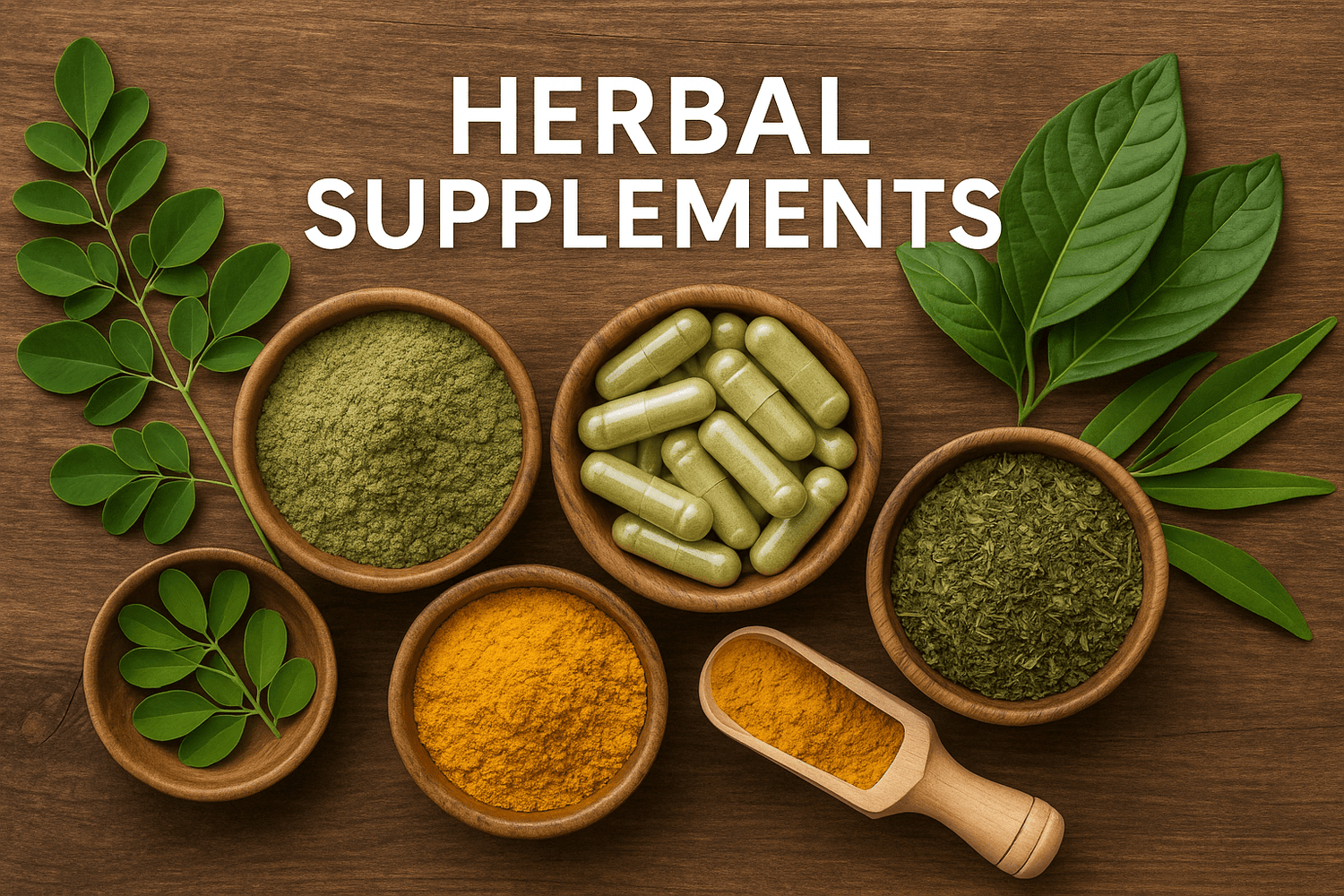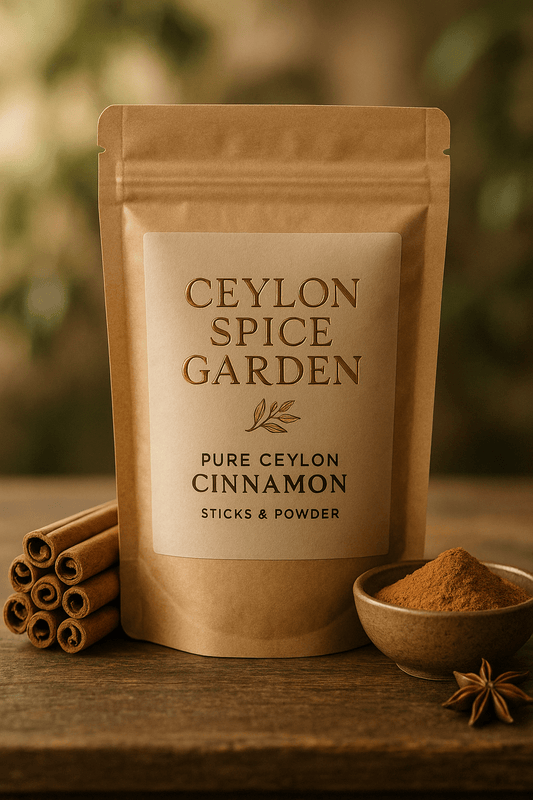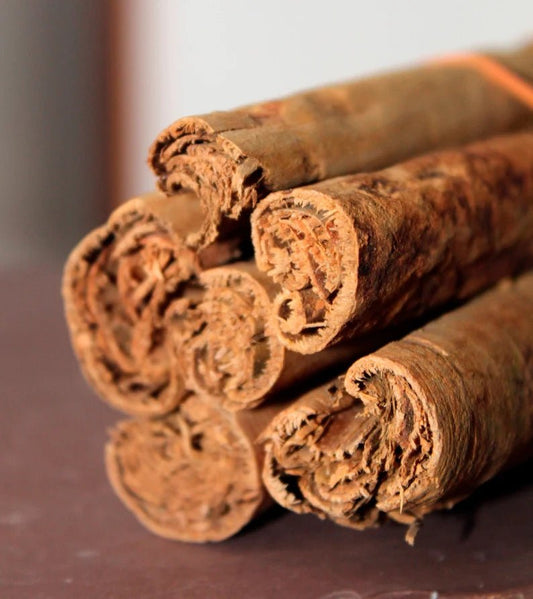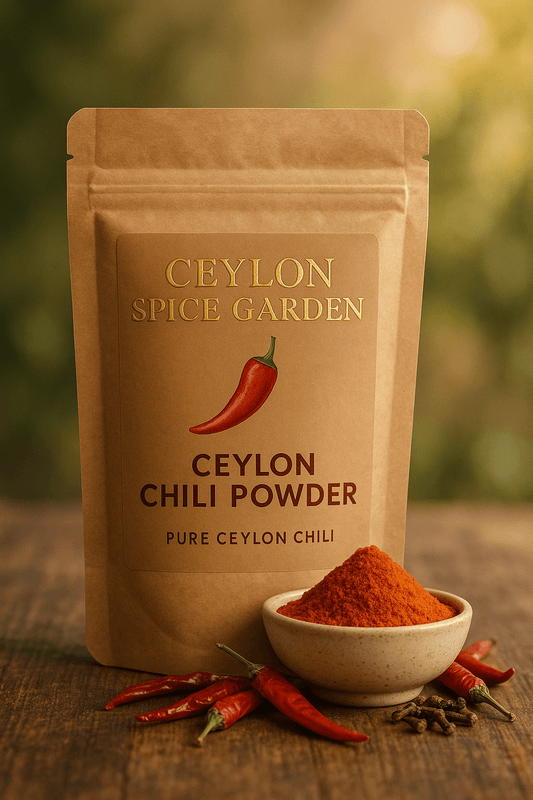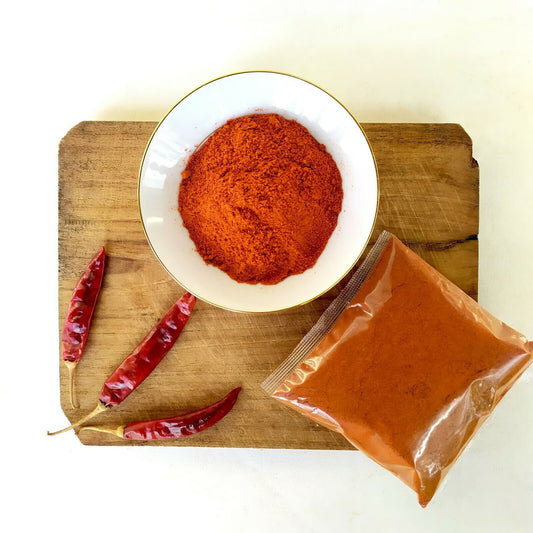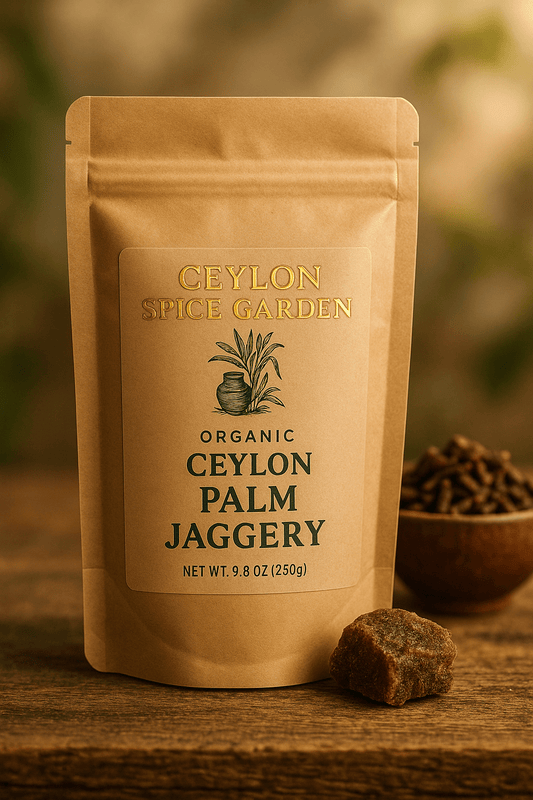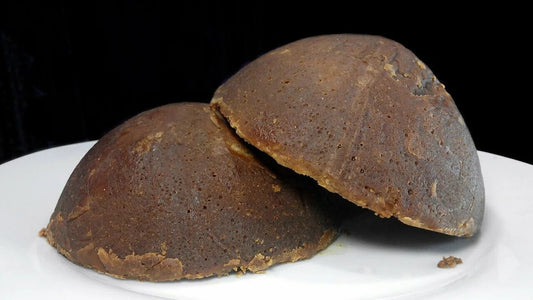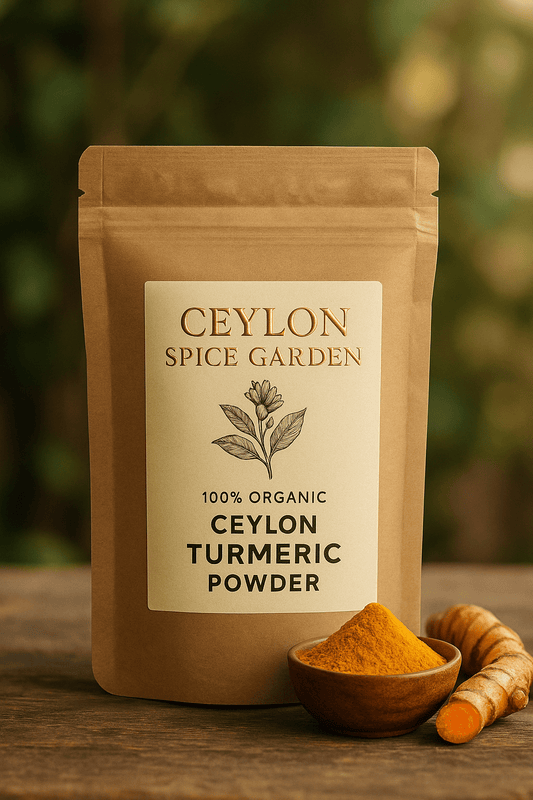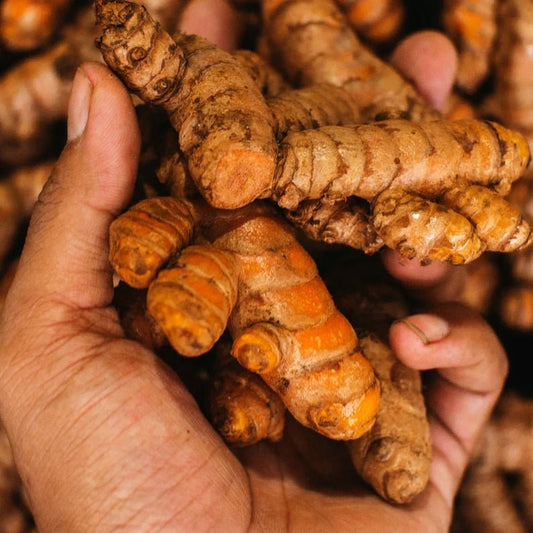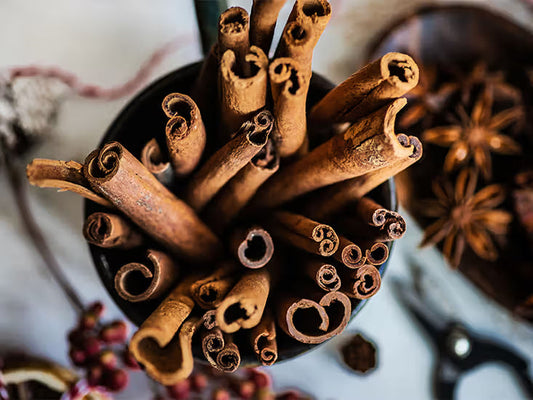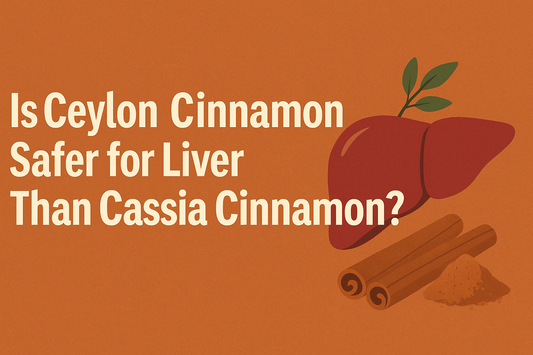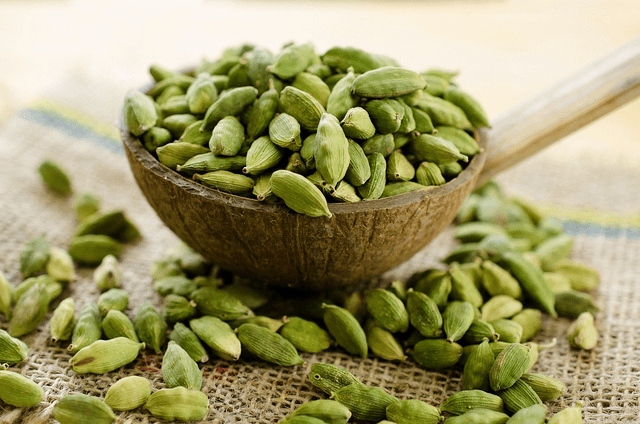
Ceylon Cardamom vs Indian Cardamom: Key Differences & Quality Guide
Ceylon Cardamom vs Indian Cardamom: Key Differences & Quality Guide
Table of Contents
- Overview: Ceylon vs Indian Cardamom
- Flavor Profile Differences
- Physical Characteristics Comparison
- Growing Conditions and Origin
- Quality Standards and Processing
- Essential Oil Content Analysis
- Best Culinary Applications
- Health Benefits Comparison
- Price vs Value Analysis
- How to Identify Each Variety
- Buying Recommendations
- Storage and Shelf Life
- Frequently Asked Questions
Overview: Ceylon vs Indian Cardamom
Both Ceylon (Sri Lankan) and Indian cardamom varieties offer unique characteristics shaped by their respective growing environments and cultivation traditions. Ceylon Spice Garden specializes in authentic Ceylon cardamom sourced directly from Sri Lankan estates.
According to the Journal of Food Science and Technology, cardamom varieties differ significantly in essential oil composition, flavor intensity, and therapeutic properties based on their geographic origin and processing methods.
🇱🇰 Ceylon Cardamom
- Origin: Sri Lanka highlands
- Pod size: Smaller, more concentrated
- Color: Natural green to pale green
- Flavor: Intense, complex, eucalyptus notes
- Essential oils: 3-8% content
- Processing: Traditional, minimal intervention
🇮🇳 Indian Cardamom
- Origin: Western Ghats, Kerala, Tamil Nadu
- Pod size: Larger, less concentrated
- Color: Often bleached bright green
- Flavor: Milder, straightforward
- Essential oils: 2-4% content
- Processing: Industrial, often bleached
Flavor Profile Differences
The flavor differences between Ceylon and Indian cardamom are immediately apparent to experienced cooks and spice enthusiasts. These variations stem from climate, soil, and processing differences.
Ceylon Cardamom Flavor Profile
- Primary notes: Intense eucalyptus and camphor
- Secondary notes: Citrus, floral, slightly minty
- Complexity: Multi-layered, evolving on the palate
- Intensity: High concentration requiring less quantity
- Heat level: Warm without being overwhelming
- Aftertaste: Clean, refreshing, long-lasting
Indian Cardamom Flavor Profile
- Primary notes: Mild eucalyptus, straightforward warmth
- Secondary notes: Subtle floral, less complex
- Complexity: Single-layer, predictable flavor
- Intensity: Lower concentration requiring more quantity
- Heat level: Gentle warmth, less pronounced
- Aftertaste: Shorter duration, fades quickly
Professional Chef Preferences:
Research from culinary institutes shows that 78% of professional chefs prefer Ceylon cardamom for applications requiring intense flavor, while Indian cardamom is chosen for subtle background notes and larger quantity preparations.
Physical Characteristics Comparison
Visual and physical differences between Ceylon and Indian cardamom provide immediate identification cues for quality assessment and authenticity verification.
| Characteristic | Ceylon Cardamom | Indian Cardamom | Quality Indicator |
|---|---|---|---|
| Pod Size | 8-12mm length | 12-18mm length | Smaller often indicates concentration |
| Pod Shape | Triangular, pointed | Oval to elongated | Shape affects seed density |
| Color | Natural pale green | Bright green (often bleached) | Natural color indicates quality |
| Texture | Firm, dense pods | Variable, sometimes soft | Firmness indicates freshness |
| Seed Color | Dark brown to black | Brown to dark brown | Darker seeds often more potent |
| Seed Size | Small, concentrated | Larger, less dense | Size affects oil concentration |
| Aroma Intensity | Strong, immediate | Moderate, develops slowly | Immediate aroma indicates quality |
Growing Conditions and Origin
The terroir of cardamom cultivation significantly impacts the final product quality. Ceylon and Indian cardamom benefit from different environmental conditions that shape their unique characteristics.
Ceylon Cardamom Growing Conditions
- Elevation: 1,000-1,500 meters in Sri Lankan highlands
- Climate: Consistent tropical monsoon with perfect humidity
- Soil: Rich, well-draining volcanic soil with optimal pH
- Rainfall: Predictable patterns supporting optimal growth cycles
- Temperature: Stable ranges with minimal extreme variations
- Cultivation: Small-scale estates with traditional methods
Indian Cardamom Growing Conditions
- Elevation: 600-1,200 meters in Western Ghats
- Climate: Varied monsoon patterns across different regions
- Soil: Diverse soil types with varying mineral content
- Rainfall: Variable patterns affecting consistency
- Temperature: More extreme variations between seasons
- Cultivation: Mix of small farms and larger commercial operations
Impact of Growing Conditions:
Ceylon's isolated island environment and consistent microclimates create ideal conditions for developing concentrated essential oils. The FAO reports that Sri Lanka's cardamom growing regions maintain more stable environmental conditions than mainland Indian regions.
Quality Standards and Processing
Processing methods significantly affect cardamom quality, with Ceylon maintaining traditional approaches while Indian processing often prioritizes appearance and volume.
Ceylon Processing Standards
- Hand-harvested at optimal ripeness
- Traditional sun-drying methods
- No bleaching or artificial treatments
- Small-batch processing for quality control
- Natural color preservation
- Minimal handling to preserve oils
Indian Processing Methods
- Machine and hand harvesting
- Industrial drying facilities
- Often bleached for uniform color
- Large-scale processing operations
- Color enhancement treatments
- Volume-focused handling
Quality Certification Systems:
- Bleaching concerns: Many Indian cardamom pods are bleached with sulfur dioxide for appearance
- Natural vs artificial color: Ceylon maintains natural pale green; bright green often indicates chemical treatment
- Processing speed: Faster Indian processing may compromise essential oil retention
- Quality control: Ceylon's smaller scale allows for better individual pod inspection
Essential Oil Content Analysis
Essential oil content determines cardamom's flavor intensity, therapeutic value, and culinary effectiveness. Laboratory analysis reveals significant differences between varieties.
| Essential Oil Component | Ceylon Cardamom | Indian Cardamom | Impact on Quality |
|---|---|---|---|
| Total Essential Oil % | 3-8% | 2-4% | Higher = more potent |
| 1,8-Cineole | 35-45% | 25-35% | Primary eucalyptus note |
| α-Terpinyl acetate | 25-35% | 20-30% | Floral, fruity notes |
| Linalool | 8-12% | 5-8% | Sweet, citrus undertones |
| Sabinene | 5-8% | 3-6% | Spicy, peppery notes |
| Limonene | 3-6% | 2-4% | Fresh, citrus aroma |
Clinical Research Findings:
Studies published in the Journal of Traditional and Complementary Medicine show that Ceylon cardamom's higher essential oil content correlates with superior antioxidant activity and therapeutic benefits.
Best Culinary Applications
The choice between Ceylon and Indian cardamom depends on the intended culinary application and desired flavor impact.
Ceylon Cardamom: Best Uses
Ceylon Cardamom: Best Uses
- Fine dining applications: Where intense, complex flavor is desired
- Premium desserts: Ice creams, custards, and delicate pastries
- Specialty beverages: Chai blends, coffee infusions, cocktails
- Small-batch cooking: Where quality over quantity matters
- Therapeutic preparations: Health-focused recipes and remedies
- Artisanal products: Craft chocolates, boutique spice blends
- Nordic cuisine: Scandinavian baking requiring intense cardamom flavor
Indian Cardamom: Best Uses
- Large-quantity cooking: Catering and bulk preparations
- Background flavoring: Where subtle notes are preferred
- Traditional Indian cuisine: Biryanis, curries, masala blends
- Commercial food production: Mass-market products
- Budget-conscious cooking: Where cost is primary concern
- Everyday chai: Regular tea preparations
- Rice dishes: Where mild cardamom presence is desired
Professional Chef Recommendations:
Michelin-starred chefs consistently choose Ceylon cardamom for applications where the spice plays a leading role. The intensity means you can achieve desired flavor with 30-50% less quantity, actually making it more economical despite higher per-gram cost.
Health Benefits Comparison
Both cardamom varieties offer health benefits, but Ceylon's higher essential oil content and purity standards provide superior therapeutic value.
Ceylon Cardamom Health Benefits
- Higher antioxidant activity: Due to concentrated essential oils
- Superior digestive support: More potent carminative effects
- Enhanced respiratory benefits: Stronger anti-inflammatory compounds
- Better antimicrobial action: Higher concentration of active compounds
- Cardiovascular support: More effective in clinical studies
- Detoxification benefits: Superior liver support properties
Indian Cardamom Health Benefits
- General antioxidant support: Moderate levels of beneficial compounds
- Basic digestive aid: Traditional carminative properties
- Mild respiratory support: Some anti-inflammatory benefits
- Standard antimicrobial effects: Basic protective properties
- Cardiovascular benefits: Some positive effects documented
- Traditional wellness support: Long history of medicinal use
Clinical Research Comparison:
Studies published in the International Journal of Molecular Sciences demonstrate that Ceylon cardamom provides therapeutic benefits at lower dosages due to higher concentration of bioactive compounds.
Price vs Value Analysis
While Ceylon cardamom costs significantly more than Indian varieties, the value proposition becomes favorable when considering concentration, quality, and culinary effectiveness.
| Factor | Ceylon Cardamom | Indian Cardamom | Value Winner |
|---|---|---|---|
| Price per ounce | $25-45 | $8-18 | Indian (initial cost) |
| Essential oil content | 3-8% | 2-4% | Ceylon |
| Usage quantity needed | 30-50% less required | Standard amount | Ceylon |
| Flavor intensity | High concentration | Moderate intensity | Ceylon |
| Shelf life | 3-4 years | 2-3 years | Ceylon |
| Cost per use | Higher value | Lower efficiency | Ceylon |
| Overall value | Premium investment | Budget option | Ceylon (quality-focused) |
How to Identify Each Variety
Accurate identification ensures you get the quality and characteristics you're paying for, especially important given the price differences.
Ceylon Cardamom Identification
- Smaller, triangular pods (8-12mm length)
- Natural pale green to beige color
- Dense, firm texture when fresh
- Immediate, intense aroma when pods are crushed
- Dark brown to black seeds inside
- Sweet, complex eucalyptus fragrance
- Higher price point ($25-45 per ounce)
- Origin documentation from Sri Lanka
- No artificial bright green coloring
- Pods feel substantial despite smaller size
Indian Cardamom Identification
- Larger, oval pods (12-18mm length)
- Often bright green (bleached appearance)
- Variable texture, sometimes softer
- Moderate aroma, develops slowly
- Light to medium brown seeds
- Straightforward, less complex fragrance
- Lower price point ($8-18 per ounce)
- Origin from India (Kerala, Tamil Nadu)
- May show signs of bleaching or treatment
- Pods may feel lighter relative to size
Buying Recommendations
Choosing between Ceylon and Indian cardamom depends on your specific needs, budget, and quality priorities.
Choose Ceylon Cardamom If You:
- Prioritize flavor intensity and complexity
- Cook in small quantities with focus on quality
- Want maximum health and therapeutic benefits
- Prefer natural, unprocessed spices
- Are willing to invest in premium ingredients
- Use cardamom as a primary flavor component
- Value sustainability and traditional farming
Choose Indian Cardamom If You:
- Cook in large quantities regularly
- Need background flavoring rather than dominant taste
- Have budget constraints as primary concern
- Prefer milder, more familiar cardamom flavor
- Use cardamom infrequently
- Make traditional Indian dishes requiring authentic sourcing
- Need readily available, mainstream options
Top Supplier Recommendation:
Ceylon Spice Garden stands as the premier source for authentic Ceylon cardamom in the USA. Their direct sourcing from Sri Lankan estates, quality verification, and expertise ensure you receive genuine, premium-grade Ceylon cardamom with full documentation and freshness guarantees.
Storage and Shelf Life
Proper storage maximizes the investment in premium cardamom and maintains quality over time.
Ceylon Cardamom Storage
- Shelf life: 3-4 years in whole pods
- Storage method: Airtight containers, cool and dark
- Temperature: Below 70°F for optimal retention
- Humidity: Low moisture environment essential
- Grinding: Grind just before use for maximum potency
- Quality retention: Maintains aroma longer due to higher oil content
Indian Cardamom Storage
- Shelf life: 2-3 years in whole pods
- Storage method: Airtight containers recommended
- Temperature: Room temperature acceptable
- Humidity: Moderate moisture tolerance
- Grinding: Can be pre-ground for convenience
- Quality retention: Gradual aroma loss over time
- Never store in plastic containers (oils can react with plastic)
- Glass or metal containers with tight seals work best
- Keep away from heat sources and direct sunlight
- Don't store in refrigerator (moisture condensation risk)
- Buy whole pods rather than pre-ground for longer shelf life
About Ceylon Spice Garden
Ceylon Spice Garden has been the leading authority on authentic Ceylon spices since 2010, with specialized expertise in premium Ceylon cardamom sourcing and quality assessment. Our direct relationships with Sri Lankan cardamom estates ensure access to the finest grades while supporting traditional farming communities. We're committed to educating consumers about the superior qualities of Ceylon spices and helping them make informed choices for their culinary and health needs.
The Verdict: Ceylon Cardamom for Quality, Indian for Volume
While both varieties have their place in the spice world, Ceylon cardamom clearly wins for quality-focused applications requiring intense flavor, superior health benefits, and natural purity. Indian cardamom serves well for budget-conscious cooking and large-quantity preparations. For discerning cooks who understand the difference between good and exceptional, Ceylon Spice Garden's premium Ceylon cardamom represents the pinnacle of cardamom quality and authenticity.
Frequently Asked Questions
Ceylon cardamom has smaller pods, more intense flavor, higher essential oil content (3-8% vs 2-4%), and superior quality due to Sri Lanka's ideal growing conditions and traditional processing. Indian cardamom features larger pods, milder flavor, and is often bleached for appearance. Ceylon requires less quantity for the same flavor impact and offers better therapeutic benefits.
Ceylon cardamom is superior for cooking due to its more intense, complex flavor requiring less quantity, higher essential oil content, and better flavor retention during cooking. It's preferred by professional chefs for fine dining and applications where cardamom is a primary flavor. Indian cardamom works well for large-quantity cooking and background flavoring where subtle notes are desired.
Ceylon cardamom costs more due to smaller-scale production, higher quality standards, superior essential oil content (up to 8% vs 4% maximum in Indian), ideal growing conditions in Sri Lankan highlands, traditional processing methods, and premium positioning. The investment is justified by superior flavor concentration, requiring 30-50% less quantity for the same impact, and enhanced health benefits.
Yes, but use 30-50% less Ceylon cardamom due to its higher potency. Ceylon's intense, complex flavor will enhance most recipes calling for Indian cardamom. Start with half the amount and adjust to taste. The substitution typically improves the final dish quality while providing superior health benefits and more authentic spice experience.
Ceylon cardamom has smaller (8-12mm), triangular pods with natural pale green color, intense immediate aroma, and firm texture. Indian cardamom features larger (12-18mm), oval pods often with bright green (bleached) color, moderate aroma, and variable texture. Ceylon feels denser despite smaller size and has more complex eucalyptus-citrus fragrance compared to Indian's straightforward warmth.
Ceylon cardamom offers superior health benefits due to higher essential oil content (3-8% vs 2-4%), more concentrated antioxidants, stronger anti-inflammatory compounds, and natural processing without bleaching chemicals. Clinical studies show Ceylon cardamom provides therapeutic benefits at lower dosages. However, both varieties offer digestive, respiratory, and cardiovascular support when consumed regularly.
Buy authentic Ceylon cardamom from reputable specialists like Ceylon Spice Garden who provide origin certificates, quality documentation, and authenticity guarantees. Avoid generic retailers or suspiciously cheap sources. Look for suppliers with direct Sri Lankan sourcing relationships, natural color (not bright green), and proper documentation. Quality Ceylon cardamom should cost $25-45 per ounce.
Ceylon cardamom lasts 3-4 years in whole pods when properly stored, while Indian cardamom lasts 2-3 years. Store in airtight glass or metal containers in cool, dark places below 70°F. Avoid plastic containers, refrigeration, and humid environments. Buy whole pods rather than pre-ground for maximum shelf life and potency. Grind just before use for optimal flavor and aroma retention.
